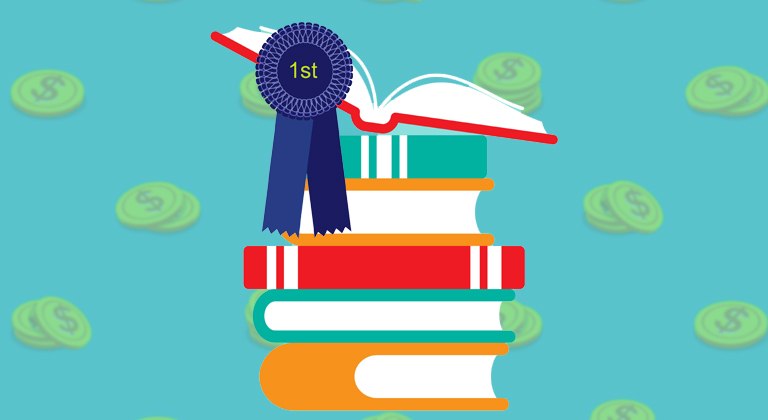Publish like a bestseller (even before you are)
For those that work regular jobs, there’s a saying that goes, “Do the job you want, not the job you have.” Essentially, that just means that if you want to get promoted or move up in your job, you should start by proving that you can handle what that higher position has in store for you. But does that still apply to self-published authors that don’t work for anyone but themselves? Of course it does, because after all, you may not be trying to prove anything to anyone but yourself but at the end of the day, isn’t that the person you want to impress the most anyway?
The truth is, there is always more success to be had, or higher levels to reach for in your career, and sitting back on your laurels is no way to get there. As Ginger describes below, the best way to capitalize on success (like a surprise bestseller) is to be ready for it when it happens. That means making sure you do everything you need to do even before you think you might need to do it.
There’s a Chinese proverb: “The best time to plant a tree was ten years ago. The second best time is now.”
Obviously, that’s true of many more things than trees – for example, making certain enhancements to the self-published books you currently have for sale.
What do I mean by “enhancements”? Well, think of them as what my 13-year-old son might call: “Pro-gamer moves.”
For example:
- Having a link to a subscription list in the front of your book.
- Having backmatter that guides eager readers directly to the next book in the series.
- Using a professional tool (or a designer with one) such as Atticus, Scrivener, or Vellum to professionally format your book.
- Making paperback and hardback print-on-demand versions.
- Putting a defensive advertising campaign in place.
To some of you, these suggestions might seem like no-brainers – but I am willing to guess that a lot more people reading this are in the same camp I was for the majority of my self-publishing career: Knowing that they should take the time to do all these things for their books, but never actually getting around to it because they weren’t selling enough copies to make it seem worthwhile.
And I get that. I get that very, very much – because it’s the situation I find myself in as I write this blog.
You see, I have a series of 12 novels in my MC romance series (written under a penname) and they’ve been ticking along nicely enough; but it’s time to take it to the next level.
And just like you won’t find a Formula One driver taking a Ford Focus around the Nürburgring, you won’t find many bestselling authors (at the level I’m hoping to reach, at least) who haven’t made these enhancements across their entire catalog of books.
So even if you think about it from a mindset alone, I’m not destined to see my name on the New York Times bestseller list until I make these enhancements, and neither are you.
A Holistic Approach
Up until this point, I’d been hesitant to get really professional about my book catalog for the same reason I think a lot of other reasonably-successful-but-want-to-go-bigger authors do. It’s kind of a chicken-and-the-egg scenario – wondering if successful authors polished their book catalogs because they became successful? Or did they become successful because they polished their book catalogs?
To me, it’s never quite seemed like it’s worth the effort because my books are selling well enough – so I figured I’d only do it when they sold more than just “well enough.” In my mind, I’d have to become successful enough to warrant all that time and investment.
But if I’m being honest with myself, I realize it’s kind of the opposite way around. Many authors become successful because they’ve already put all these things in place – and while fancy formatting and a subscriber list won’t turn an unsuccessful catalog of books into bestsellers, when you actually have a successful book in your catalog, having all of that stuff already set up will definitely grease the wheels to help all your other books sell better.
You see, your book catalog is this living, breathing, holistic thing that has roots and tendrils across all of the books you’ve written, and when readers find a book of yours they like, they’ll often follow these tendrils and end up reading more of your books, or joining your subscriber list.
Having all the enhancements I mentioned above in place already – like a mailing list, and backmatter that links to the next book in the series – means it’s effortless for any curious reader to find more of your stuff to buy with just the tap of their phone screen.
But if you haven’t got all those things set up, it’s like taking a pair of shears to all those roots and tendrils and cutting them off from the rest of your books. It makes it more of an effort for a curious reader to find more of your stuff, or join your mailing list, and often that means they just won’t bother.
Now, if your books are selling just-well-enough this might not be too much of a concern. I mean, if you’re selling 10 books a day, you might not think it’s worth the effort of re-writing and re-publishing your backmatter with new links in it, or joining Mailchimp to set up a subscription list.
But here’s the thing – what happens the day that changes?
Shrivel on the Vine
When I published my first bestseller, it was practically by accident. I’d been struggling away as an almost-made-it author, with 11 published books and an income of about $20 – $50 a day in royalties.
Then I published a lurid romance book that I’d really enjoyed writing – and woke up one morning to find my income had skyrocketed to $500 a day overnight!
But back then, the sales to the other books I’d written didn’t get as massive a boost as they could have done. I had a mailing list, but I hadn’t set up any automation in it – and my backmatter didn’t contain a preview of the next book in the series (because I hadn’t written it yet.)
So my bestseller performed brilliantly – but it was doing its own little solo, while the rest of book catalog just sat there. It was a one-hit-wonder, and as the sales and buzz around that book died down, I had to rely on the next book to keep my sales and royalties at that level.
I’d let an enormous opportunity shrivel on the vine because I’d figured I’d do all that stuff I should be doing (like updating my backmatter, etc) only when my books became successful; but when one of my books did become successful, it was so suddenly that I didn’t have time to scramble and fix all of the things that were stopping new readers from exploring the rest of the books in my series.
Ripe on the Vine
The sheer scale of this wasted opportunity was only revealed to me when I started to make some of my older books a little more successful through advertising.
The secret to successful advertising is in experimenting and enhancing things. Testing and measuring results is vital.
For example, I doubled my conversion rate (the number of visitors to my book page who ultimately bought the book) by changing the font size of my blurb, and then I managed to do the same thing again by re-writing the first few pages of the Look Inside.
But what was really surprising to me wasn’t the impact these enhancements had on the conversion rate for one particular book, but how big an impact they had across my entire catalog of books.
For example, I took the time to add the first chapter and a direct link to the next book in the series into the backmatter of each of my books – and suddenly I noticed a seamless boost in sales through the entire series. A few days after my ads ran for Book One in the series, I’d suddenly see a mysterious bump in sales for Book Two which could only be explained by new readers following those links to the next book in the series.
Likewise, a few days later there’d be a smaller (but still significant) boost in sales for Book Three – and so-on and so-forth as readers worked their entire way through the series.
While that didn’t impact the success of advertising Book One, it did mean I made a bunch more sales of subsequent volumes without having to run any advertising for them at all. With my books retailing at $4.99, that meant acquiring a new reader for Book One in the series didn’t net me the royalties for just that book (call it $3.50) but also the royalties for every other book they’d bought. So, if somebody went on to read all twelve books, I’d end up making nearly $42 in royalties!
When I realized this I immediately saw how much money I’d left on the table when I’d published my first bestseller. I hadn’t put these things in place to enhance the reader experience of my books, and as a result I’d foolishly put up roadblocks that deterred countless readers from becoming avid fans.
The best time to do it…
Which is why I’m urging you, as a self-published author, not to make the same mistake I made. Sure, your books might not be as successful as you’d like them to be right now – but that means you have the time and opportunity to go and fix that mistake before you need to.
I even wrote a blog post with some suggestions for curating your back catalog which might help get you started.
And I’m not just taking about updating your backmatter or your subscriber sign-up page. I’m talking everything. Make your books as polished and as beautiful as possible so they look like bestsellers even if they aren’t (yet.)
Invest in some really top-notch formatting. Write out automated emails to lure subscribers into buying the next books in the series. Think like a reader and consider how to best guide them to discover more of your work, and then test the results to see how much difference the improvements make.
If you want to be as successful as today’s New York Times bestselling authors, you owe it to yourself and your readers to have books that look as polished and professional as theirs are. Be brutally honest with yourself, cut no corners, and present your books in their best, possible light.
Because if you do, you’re ready to become a bestseller. If you don’t, then you might as well already accept defeat.
If you’d like some help or advice on what enhancements to make to your book catalog, we offer 1-on-1 consulting that can provide specific, actionable advice tailored to your books. Go and check out the details here.











